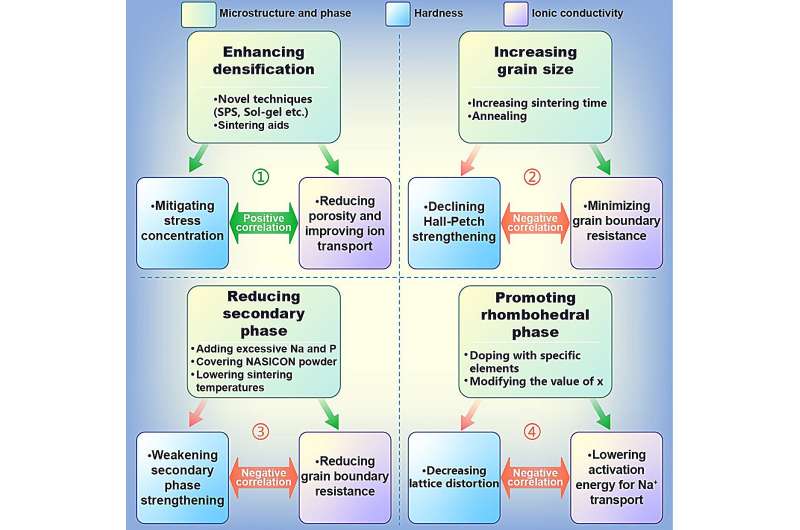
December 10, 2024 by Tohoku University
Collected at: https://techxplore.com/news/2024-12-sodium-superionic-conductors-solid-state.html
Life would be easier if batteries charged in seconds, stored more energy, lasted longer, and were overall safer to use. As such, highly efficient solid-state batteries are currently a hot topic in the field, with many car companies even promising to offer them in future vehicles.
A diverse team of international researchers has conducted a comprehensive analysis to unveil new insights regarding a key correlation between mechanical properties and ionic conductivity of sodium superionic conductors (NASICON).
These findings, published in Materials Today Energy, could help design future studies that can propel modern energy technology forwards.
NASICON is a crystal structure with high levels of conductivity, making it well-suited for energy applications such as batteries. Balancing their mechanical properties and their ionic conductivity is crucial to maximize performance, stability, and safety. For example, some changes may boost ionic conductivity but have a negative impact on the structural integrity, making NASICON less stable. There must be a delicate balance between all the properties to reach a “Goldilocks” level of synergy.
“We found that the most important factor was the relative density,” explains Eric Jianfeng Cheng of Tohoku University, “When we increased NASICON’s relative density, it not only improved ionic conductivity, but mechanical strength as well. It was a win-win situation.”
Based on their experimental results and an extensive review of existing studies, the researchers recommend using advanced sintering techniques―processes that apply heat to reshape and reform solid materials, such as spark plasma sintering (SPS)―to achieve a high relative density in sodium superionic conductors. By doing so, defects such as pores and other imperfections can be effectively reduced.

In comparison, altering other key factors such as secondary phases and crystal structure would lead to significant trade-offs. Increasing grain size reduces grain boundary resistance, thereby boosting ionic conductivity, but may compromise mechanical integrity due to increased porosity. Similarly, the formation of secondary phases can strengthen the material mechanically, but often hinders ionic transport.
The study established that improving relative density uniquely supports concurrent enhancements in both ionic and mechanical properties, a synergy not observed with other factors. This relationship extends to other oxide-based solid electrolytes, such as garnet Li7La3Zr2O12 (LLZO), demonstrating the broader relevance of these findings.
By providing a clear framework for optimizing both mechanical and ionic properties, this research may aid the development of high-performance, solid-state batteries, positioning NASICON as a promising material for next-generation energy storage technologies.
More information: Eric Jianfeng Cheng et al, Correlation between mechanical properties and ionic conductivity of polycrystalline sodium superionic conductors: A relative density-dominant relationship, Materials Today Energy (2024). DOI: 10.1016/j.mtener.2024.101644

Leave a Reply